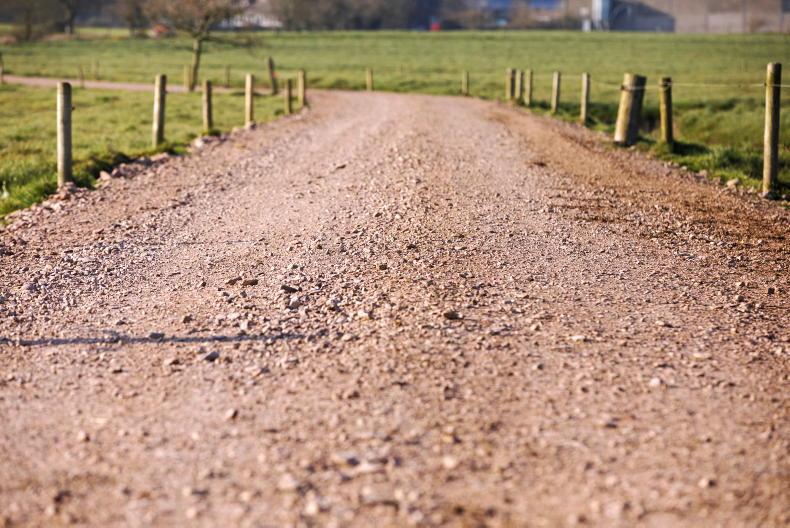We have been inundated with queries regarding rights of way (RoW) and have set out, below, a selection of some of the most popular queries.
“There is a lane going past four houses. I applied and was paid for the small lanes scheme. The council took it over to my house at the dead end; the council are maintaining it – so who owns that now? Everybody signed to get it done.”
The Local Improvement Scheme (LIS) provides funding to help local authorities carry out improvement works on private and non-publicly maintained roads.
As the roads are not in charge of the local authority, they remain in private ownership and, consequently, the law change to rights of way coming in from 30 November 2021 are of relevance.
A review of the folios and maps on the land registry website (landdirect.ie) should enable you to determine who continues to own the land over which the lane exists and against whom you need to register your right of way.
“An old mass path passes through my land. With the opening of a new cemetery and motorisation, the pathway has fallen into disuse over several years.
“Can I register that mass path as a right of way that I could use as a regular entrance to proposed new farm buildings?”
The potential conflict in this situation is whether the route is a public right of way or a ‘pilgrim path’. This is a legally significant distinction. Section 14 of the Planning and Development Act, 2000 provides that the inclusion of a public right of way in a development plan is evidence of the existence of the right of way “unless the contrary is shown”. The landowner who owns the land over which the alleged public right of way exists is normally notified in advance of any inclusion in the county development plan and given an opportunity to object to its inclusion.
You should check with the local authority as to whether it has been included as a public right of way. The majority of public rights of way are created by inferred dedication and evidence of long use.
On the other hand, a pilgrim path which would be used by members of a community to access a church, for example, is seen as a customary right which applies to a particular district and is enjoyed by an undefined class of local people (over the land of another) from time immemorial, without interruption. Customary rights are limited in use and are characterised by their “local dimension”. Customary rights are burdens which affect registered land without registration and are recognised as a legal interest in land pursuant to section 11(4)(b) of the Land and Conveyancing Law Reform Act 2009.
However, they are not equivalent to easements – ie rights of way – and a person asserting a customary right may establish his/her inclusion in a class of persons who have acquired a customary right over the land in question but maybe unable to prove the existence of a right of way in their favour.
‘Which maps are considered official by law?’
“I own a parcel of land which I access via a right of way. The lines and measurements that appear on the historic map correspond with the actual location of the laneway on the ground. The lines on the map on the land registry website are completely distorted and one end of the laneway appears to be part of the land owned by a different neighbour and the other end of the laneway doesn’t even lead to the entrance to my field. Which maps are considered official by law?”
The Property Registration Authority of Ireland (PRAI) is the registering authority in relation to property in Ireland. The title shown on the folio is State-guaranteed, however that guarantee does not extend to boundaries.
The registry map identifies properties, not boundaries, and provides “that the description of land on the registry map shall not be conclusive as to boundaries or extent of land”. The non-conclusive boundary system will not indicate whether a title boundary includes a hedge, wall or ditch, or runs along the centre of a wall or fence, or runs along its inner or outer face, or how far it runs within or without it, or whether or not the land registered includes the whole or any portion of an adjoining road or stream.
Consequently, it would be important to review historic maps lodged to the PRAI to determine whether the map lodged was incorrectly marked or whether the PRAI incorrectly registered the deed and map lodged, which could have occurred during the digital mapping process where all existing paper based maps were converted into electronic form.
If an error has been made, this should be brought to the attention of the PRAI who will examine the error. Rectification of the error can be effected by consent of the parties, by deed of rectification or deed of transfer.
The PRAI may rectify the error after giving such notice to the affected parties if they are of the opinion that the error can be rectified without loss to any person.
Where an error cannot be rectified by consent, it may be rectified by the court. It will probably be necessary to rectify the error before the PRAI will proceed with registering the right of way.
Disclaimer: The information in this article is intended as a general guide only. While every care is taken to ensure accuracy of information contained in this article, Aisling Meehan Agricultural Solicitors does not accept responsibility for errors or omissions howsoever arising.
We have been inundated with queries regarding rights of way (RoW) and have set out, below, a selection of some of the most popular queries.
“There is a lane going past four houses. I applied and was paid for the small lanes scheme. The council took it over to my house at the dead end; the council are maintaining it – so who owns that now? Everybody signed to get it done.”
The Local Improvement Scheme (LIS) provides funding to help local authorities carry out improvement works on private and non-publicly maintained roads.
As the roads are not in charge of the local authority, they remain in private ownership and, consequently, the law change to rights of way coming in from 30 November 2021 are of relevance.
A review of the folios and maps on the land registry website (landdirect.ie) should enable you to determine who continues to own the land over which the lane exists and against whom you need to register your right of way.
“An old mass path passes through my land. With the opening of a new cemetery and motorisation, the pathway has fallen into disuse over several years.
“Can I register that mass path as a right of way that I could use as a regular entrance to proposed new farm buildings?”
The potential conflict in this situation is whether the route is a public right of way or a ‘pilgrim path’. This is a legally significant distinction. Section 14 of the Planning and Development Act, 2000 provides that the inclusion of a public right of way in a development plan is evidence of the existence of the right of way “unless the contrary is shown”. The landowner who owns the land over which the alleged public right of way exists is normally notified in advance of any inclusion in the county development plan and given an opportunity to object to its inclusion.
You should check with the local authority as to whether it has been included as a public right of way. The majority of public rights of way are created by inferred dedication and evidence of long use.
On the other hand, a pilgrim path which would be used by members of a community to access a church, for example, is seen as a customary right which applies to a particular district and is enjoyed by an undefined class of local people (over the land of another) from time immemorial, without interruption. Customary rights are limited in use and are characterised by their “local dimension”. Customary rights are burdens which affect registered land without registration and are recognised as a legal interest in land pursuant to section 11(4)(b) of the Land and Conveyancing Law Reform Act 2009.
However, they are not equivalent to easements – ie rights of way – and a person asserting a customary right may establish his/her inclusion in a class of persons who have acquired a customary right over the land in question but maybe unable to prove the existence of a right of way in their favour.
‘Which maps are considered official by law?’
“I own a parcel of land which I access via a right of way. The lines and measurements that appear on the historic map correspond with the actual location of the laneway on the ground. The lines on the map on the land registry website are completely distorted and one end of the laneway appears to be part of the land owned by a different neighbour and the other end of the laneway doesn’t even lead to the entrance to my field. Which maps are considered official by law?”
The Property Registration Authority of Ireland (PRAI) is the registering authority in relation to property in Ireland. The title shown on the folio is State-guaranteed, however that guarantee does not extend to boundaries.
The registry map identifies properties, not boundaries, and provides “that the description of land on the registry map shall not be conclusive as to boundaries or extent of land”. The non-conclusive boundary system will not indicate whether a title boundary includes a hedge, wall or ditch, or runs along the centre of a wall or fence, or runs along its inner or outer face, or how far it runs within or without it, or whether or not the land registered includes the whole or any portion of an adjoining road or stream.
Consequently, it would be important to review historic maps lodged to the PRAI to determine whether the map lodged was incorrectly marked or whether the PRAI incorrectly registered the deed and map lodged, which could have occurred during the digital mapping process where all existing paper based maps were converted into electronic form.
If an error has been made, this should be brought to the attention of the PRAI who will examine the error. Rectification of the error can be effected by consent of the parties, by deed of rectification or deed of transfer.
The PRAI may rectify the error after giving such notice to the affected parties if they are of the opinion that the error can be rectified without loss to any person.
Where an error cannot be rectified by consent, it may be rectified by the court. It will probably be necessary to rectify the error before the PRAI will proceed with registering the right of way.
Disclaimer: The information in this article is intended as a general guide only. While every care is taken to ensure accuracy of information contained in this article, Aisling Meehan Agricultural Solicitors does not accept responsibility for errors or omissions howsoever arising.










SHARING OPTIONS